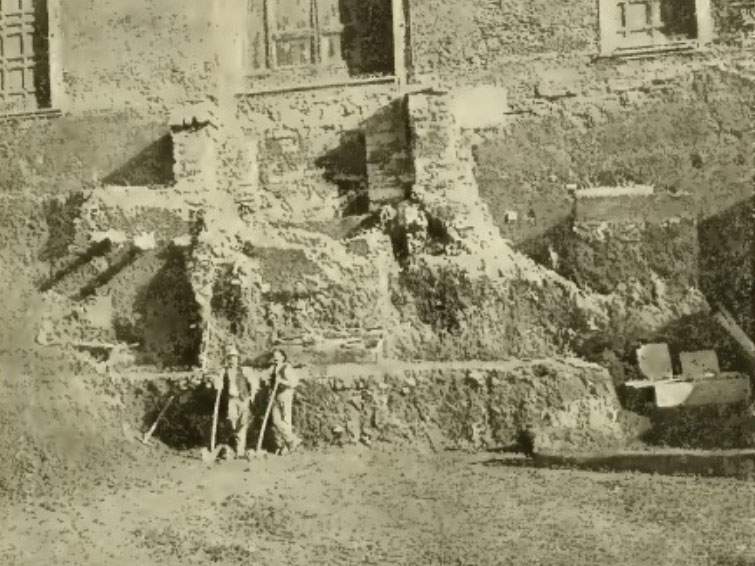Rome, the sarcophagus of Romulus at the Forum is not an exceptional discovery: the director of Villa Giulia points out
The management of the Colosseum Archaeological Park had presented it, in the press note, as an “exceptional discovery,” as we had reported in the article published the day before yesterday in which we announced the discovery, in the Roman Forum, of an underground environment with inside a tufa sarcophagus about 1.40 m long and a circular element, perhaps an altar. Not only that: many newspapers reported the news spreading it as the “discovery of the tomb of Romulus,” while in fact it was clear that it was an environment located in the place where a passage by Varro places the burial of the mythical founder of Rome, but without any certainty about it.
Shedding light on the “discovery” (which, however, will be presented at a press conference on Friday) is the director of the National Etruscan Museum of Villa Giulia, Valentino Nizzo, who revealed that the environment with the sarcophagus was actually already well known to scholars as it was first published in 1900 by archaeologist Giacomo Boni (Venice, 1859 - Rome, 1925): the Colosseum Park’s communiqué, in fact, stated that the “discovery” came a year after the start of studies on the documentation produced by Boni in the early twentieth century, which had allowed us to hypothesize the presence, in the Roman Forum, of a heroon (i.e., a sanctuary) dedicated precisely to Romulus.
“Since many people know how much Romulus is dear to my heart,” Nizzo wrote on his Facebook profile, “here is his ’tomb,’ in the original publication of that genius Giacomo Boni, dated 1900”: below, Nizzo then published the lines that Boni wrote in 1900 in an article published in the journal Notizie degli scavi di antichità, where it is stated that “under this ossuary, at m. 3.60 from the core of the steps, there is a rectangular tufa chest or basin, m. 1.40 long, m. 0.70 wide, m. 0.77 high, in front of which rises a truncated cylinder with a diameter of m. 0.75. The tufa case contained pebbles, coarse pot shards, fragments of Campanian pottery (ed. note: datable no earlier than the 4th century B.C.) a certain amount of pectunculus valves and a piece of red-colored plaster.”
This is, indeed, the environment that the Colosseum Archaeological Park presented as “resurfaced,” calling it an “exceptional discovery.” Nizzo added that the contents of the crate “do not constitute evidence for the dating of the crate itself, but only a terminus ante, since the crate seems to have been subjected to subsequent disturbances that altered its original consistency. From this to infer anything in relation to Romulus is an exercise on which one can freely and responsibly apply oneself. Cases of a posteriori heroization of mythical figures are well known at Lavinium in the case of the so-called Heroon of Aeneas, an Orientalizing burial monumentalized centuries later. This also occurred for Romulus, of course, but in quite different ways.”
Still in relation to the Colosseum announcement, Nizzo explained that it sometimes happens that “archaeologists excavate things excavated by other archaeologists without realizing it”: however, the oddity of this case lies in the fact that the excavation is part of a research project that explicitly cites the documentation produced by Giacomo Boni. Therefore, it is unclear what the “exceptional discovery” would be: everything will probably be clarified with Friday’s press conference.
Pictured: ossuaries and sarcophagi leaning against the ancient entrance to the Curia, as published in Giacomo Boni’s 1900 article.
 |
| Rome, the sarcophagus of Romulus at the Forum is not an exceptional discovery: the director of Villa Giulia points out |
Warning: the translation into English of the original Italian article was created using automatic tools. We undertake to review all articles, but we do not guarantee the total absence of inaccuracies in the translation due to the program. You can find the original by clicking on the ITA button. If you find any mistake,please contact us.




























